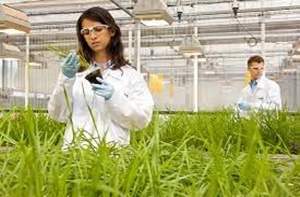Tendances de la recherche agricole marocaine: une analyse bibliométrique exploratoire (2005-2015)
Résumé
La présente étude a comme objectif l'analyse de la production scientifique agricole du Maroc durant la période 2005-2016 sur la base des publications présentées par la base de données SCOPUS. L'évolution du système national d'enseignement supérieur et de recherche marocain a été remarquable au cours de la dernière décennie. Ainsi, de nouvelles politiques et programmes de financement de la recherche, de nouveaux acteurs, ainsi qu'un profond changement dans le contexte économique et politique général du pays ont contribué entre autres à cette évolution. La stratégie agricole «Plan vert marocain» a contribué à cette dynamique depuis 2008. Les objectifs spécifiques de ce travail ont été d'identifier les retombées de cette politique sur la recherche scientifique agricole, tout en caractérisant les recherches menées par les institutions publiques relevant du département de l'agriculture et celles par les universités, ainsi que celles réalisées dans un contexte de collaborations nationales et internationales. Cette première étude examine la croissance des publications agricoles marocaines, les citations, les modèles de collaboration, les auteurs et les institutions les plus productives. Les orientations thématiques de recherche sont également identifiées par une classification originale adaptée au domaine agricole. Ce travail constitue une étude pilote, tant pour les décideurs que pour les chercheurs et les ingénieurs du pays, afin de concevoir des indicateurs axés sur les orientations, les forces et les faiblesses du système de recherche agricole.
Mots clés: Recherche agricole, Production scientifique, Recherche développement, étude bibliométrique, Gouvernance de la recherche.
Téléchargements

Publié-e
Comment citer
Numéro
Rubrique
Licence

Revue Marocaine des Sciences Agronomiques et Vétérinaires est mis à disposition selon les termes de la licence Creative Commons Attribution - Pas d’Utilisation Commerciale - Partage dans les Mêmes Conditions 4.0 International.
Fondé(e) sur une œuvre à www.agrimaroc.org.
Les autorisations au-delà du champ de cette licence peuvent être obtenues à www.agrimaroc.org.

